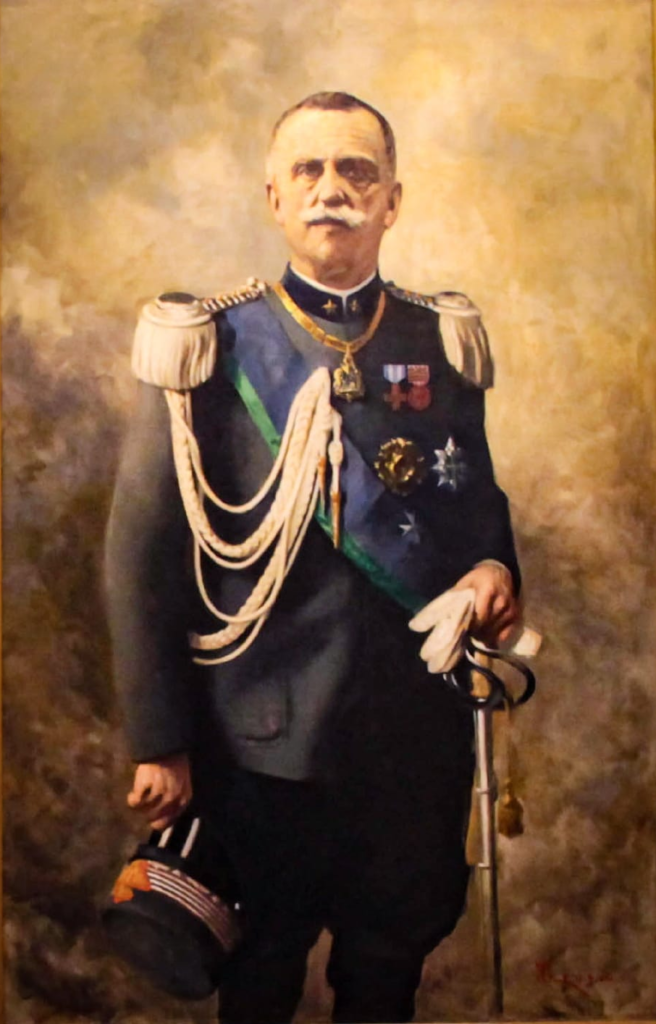Deep-Sea Miners Ogling Strategic Minerals
Treasure in Davey Jone’s Locker
“There’s gold in them thar depths.”
Millions upon untold millions of potato-sized rocks lay scattered across 4.5 million square kilometres of seafloor between the Hawaiian archipelago and Clipperton, an uninhabited atoll some 1,300 kms southwest of Manzanillo, Mexico. This ultimate of desert islands belongs to France.
Last year, the industrial drill ship Hidden Gem left Manzanillo for an expedition to the Clarion-Clipperton Zone, the vast abyssal plain that holds inestimable quantities of critical minerals. The ship – essentially an oversized large hoover – was operated by Nauru Ocean Resources Inc (NORI), a subsidiary of the Canadian deep-sea miner The Metals Company (TMC), and had embarked on a trial run to test its on-board machinery.
TMC, listed on Nasdaq, soon reported that a pilot collection run across just 150 meters of seafloor had yielded around 14 tonnes of polymetallic nodules collected by a remote controlled vehicle and brought to the surface by a 4,300-meter-long riser system.
TMC CEO and chairperson Gerard Barron called the successful trial a ‘historic moment’ and pointed out that his company was the first to deploy an integrated nodule collection system in the Clarion-Clipperton Zone since the 1970s when a number of oil and mining majors, including Shell, BP, and Rio Tinto, surveyed the area but failed to follow up on their findings.
Times have changed and global demand for nickel, cobalt, copper, manganese, and zinc used in batteries has become near-insatiable. Polymetallic nodules harvested from the depths contain the metals that can help power the transition to clean energy. The lumps even contain rare-earth oxides.
A preliminary stocktaking by the Massachusetts Institute of Technology and the Technical University Delft in The Netherlands concluded that the zone between the Hawaiian islands and Clipperton contains an estimated 21 billion tonnes (Bt) of nodules, including almost 6 Bt of manganese (approx. 350% of global land-based reserves) , 0.27 Bt of nickel (70%), 0.23 Bt of copper (23%), and 0.05 Bt of cobalt (600%).
Deep Dive Stock
Founded in 2011 and headquartered in Vancouver, TMC has raised $400 million (£323 million) from strategic partners Allseas and Glencore, venture funds, family offices, and financial institutions. The company went public in 2020, listing its shares on the Nasdaq exchange where it has not fared all that well since.
Since its debut, TMC saw its shares lose about 88 percent of their value. However, analysts are bullish on the company and almost unanimously agree on a potential upside of over 330 percent in the next 12 months.
The company’s fate hinges on an application for deep-sea mining in the Clarion-Clipperton Zone, TMC intends to submit one during the next meeting, in July 2024, of the International Seabed Authority (ISA), established in 1994 to implement the United Nations Convention on the Law of the Sea. ISA controls 54 percent of the world’s ocean floor and is charged with authorising and managing ‘mineral-related’ operations in areas beyond national jurisdictions.
Since its founding, ISA has granted 22 exploration contracts to deep-sea miners to hunt for polymetallic nodules and sulphides and the cobalt-rich ferromanganese crusts of seamounts. TMC subsidiary NORI secured a contract, sponsored by the Republic of Nauru, in the Clarion-Clipperton Zone covering an area of almost 75,000 square kilometres.
The NORI exploration area, just a tiny slice of a much wider zone, was found to contain the world’s largest undeveloped nickel deposit with close to 5 million tonnes of high grade (1.4%) of the base metal used in the manufacturing of stainless steel and, increasingly, batteries.
TMC expects the application process to take about a year and hopes to start production by Q4 2025. However, ISA has been notoriously slow in defining the rules, regulations, and procedures that are to govern the exploitation of the seabed. Whilst the UK, Norway, and Mexico have been pushing hard for the finalisation and adoption of a deep-sea mining code, others are urging ISA to pull back and consider the damage to the subsea environment.
SpongeBob’s Bite
Greenpeace deep-sea mining campaign leader Louisa Casson called it ‘wrong’ to consider the exploitation of the seafloor as part of an answer to the ‘climate and nature emergency’. The Deep Sea Conservative Coalition (DSCC), a collection of over a hundred non-government organisations and policy institutes, is concerned about the possibly irreversible harm to marine life and biodiversity of large-scale mining operations.
A study published in the peer-reviewed Current Biology journal, found that the Clarion-Clipperton Zone is home to almost 8,000 marine species of which 92 percent are new to science and yet unnamed. Amongst the species discovered by marine biologists from the UK, Norway, and Sweden during recent oceanographic expeditions are carnivorous sponges and a host of nematodes (round worms) and echinoderms (sea cucumbers).
TMC and other deep-sea miners are acutely aware of the controversy surrounding their operations and have been exceptionally diligent in monitoring and documenting the impact of nodule collection on the seafloor. For its trial runs, TMC invited a host of marine biologists and academics to track its deep-sea explorations and assess their effect on the environment.
Charlotte Miller, head of sustainability at Benchmark Mineral Intelligence, a tracker of minerals and supply chains essential to the energy transition, says that demand for key land-based minerals outstrips supply ‘by far’ even if recycling is taken into account. Mrs Miller predict an acute shortage of cobalt as early as 2026 and of nickel just one year later.
In the majority of environmental impact categories, deep-sea mining results in better performance. The extraction model proposed by TMC reduces the emission of harmful CO2 by up to 70 percent compared to land-based mining. However, Planet Tracker, a non-profit think tank that seeks to align capital market with planetary boundaries, calculated that restoring the seafloor after it has been hoovered could cost upwards of $5 million (£4 million) per square kilometre. The think tank also reckons that the value of the nodules present in an area of that size borders about $4.5 million (£3.6 million).
Cold Shower
Meanwhile, TMC CEO Gerard Barron insists that there is no time to waste: “The clock is ticking for climate action and mining the deep seafloor is a less damaging alternative than either not getting access to the metals needed in the transition or continuing to extract them from land-based resources.”
Mr Barron also pointed out that in Indonesia, mining for critical metals causes deforestation and the loss of biodiversity in addition to displacing indigenous communities. Cobalt mining in Central Africa is notorious for employing child labour. Congo (DRC) last year produced 72 percent of the world’s cobalt.
Whilst vast riches are waiting to be reaped – or sucked up – from the oceans, it is doubtful that deep-sea mining will get underway anytime soon. The oil and mining majors that explored the Clarion-Clipperton Zone half a century ago were not so much stopped by the technical limitations of the time, or by disappointing finds, as they were by the lack of regulation. The Convention on the Law of the Sea was only adopted by the United Nations in 1982 and has still not been codified.
Though ISA is said to be working on that, diplomats doubt that regulation will be in place by 2025 when TMC hopes to start its operations on a commercial scale. Pradeep Singh, a Harvard-trained expert on ocean governance and involved in the ongoing negotiations between ISA member states, thinks that TMC and other deep-sea mining companies are overly optimistic and underestimate the time it will take to get regulation enacted.
Pouring cold water on market analysts going gaga over TMC’s outlook, Mr Singh warned that ISA member states have repeatedly indicated their unwillingness to be rushed or corned into allowing the start of deep-sea mining.

Clipperton
Love, Death, and Madness on a Speck
It’s an outpost unlike any other. Clipperton, a forlorn French possession in the Pacific and far outside shipping lanes, covers not nine square kilometres. Its lagoon, closed off from the surrounding seas since the mid-1800s, contains stagnant brackish water devoid of fish.
The island is overrun by land crabs and covered with spiny grass. Most of the coconut palms introduced in the late 1800s by American guano miners have since succumbed to the crabs. Only a small stand remains in the southwestern corner of the island.
Mexico’s now relinquished claim to the island was based on a possible sighting by the Spanish explorer Fernando de Magallanes in the early sixteenth century. However, in 1711 French navigators were the first to plot the island correctly on the map and promptly claimed it for Louis XIV – the Sun King. Few took notice and only in 1858 France decided to merge its half-forgotten possession with Tahiti, a protectorate 5,400 kms distant.
Mexico did not notice either and nothing much happened until, in 1890, American guano miners arrived to work the island’s rich deposits. This sparked renewed interest and in 1905, the government of Mexico resolved to dispatch a small garrison to Clipperton to enforce its dormant claim.

From Deserter to Governor
Command of the undertaking was entrusted to 27-year-old Ramón Arnaud Vignon, born in Veracruz to wealthy French parents who had stayed on in Mexico after the Second French Intervention (1861-1867), a war unleashed by Emperor Napoleon III to recover unpaid loans.
The younger Arnaud Vignon was predestined for the Military Academy but, once there, soon wrote his own marching orders. Arrested, stripped of his rank, and carted off to prison, the deserter spent almost six months behind bars before being reenlisted as a private. However, serving with distinction in the Caste War of Yucatán (1847-1915) won him back his rank and brought recognition.
For reasons lost to history, Sergeant Arnaud gained the attention and trust of President Porfirio Díaz who sent the young man on a secret diplomatic mission to Japan. Upon his return, Sergeant Arnaud was promptly appointed governor of Clipperton and, despite his protestations, sent on his way, albeit as a lieutenant.
Arriving on the island with a small coterie of soldiers, and their wives and children, Lt Arnaud proceeded to build his utopia. Although supplies arriving by schooner from the mainland were intermittent, relations with the guano miners were civil and the food adequate. Two years into the adventure, Sergeant Arnaud visited Orizaba, his hometown, to marry Alicia Rovira.
After the elaborate ceremony, the happy couple almost immediately returned to Clipperton where the lieutenant’s wife settled into a comfortable routine. Daughter of an upper class family, fluent in multiple languages, a gifted pianist, and sent on a Grand Tour of Europe, Alicia organised a school for the children of the island’s soldiers and classes in cooking, sewing, and other domestic tasks for the soldiers’ wives.
Bristling with patriotism, her husband hoisted the Mexican flag each morning in a ceremony attended by all. However, the nation had mostly forgotten about the Clipperton garrison. Supply ships often failed to arrive, wrecking Alicia’s plans to travel home to give birth. Instead, her son was born without complications on the island.
Revolution
In 1911, a passing tramp steamer brought news of revolution and the destitution of President Díaz. In the chaotic years that were to follow, Lt Arnaud does his utmost to maintain a presence on Clipperton. During a visit home in 1913, he is promoted to captain and assigned nine soldiers and a corporal to continue his mission, plus their wives and children. The new captain also takes his family servant along.
The group arrives on Clipperton to discover that the guano miners – a more dependable lifeline than the Mexican navy – had departed. In early 1914, with food already running low, the schooner Nokomis ran off course and foundered in Clipperton waters, stranding twelve Dutch sailors on the island. Rather than wait for food to run out and tensions to rise, the Dutch captain orders his men to build a boat from driftwood and decides to steer the improvised craft to Acapulco, 950 kms distant over rough seas and counter currents.
After a near-suicidal two-week crossing, Captain Jansen and his crew make it to Acapulco and alert the authorities to the dire state of the Clipperton garrison. The message was either lost in translation or got stuck in a drawer. Nobody takes action.
A few months later, the USS Cleveland, a protected cruiser, was ordered to Mexican waters to protect American lives and property. On its way south, the shipped called at Clipperton. Cpt Arnaud learned that the Mexican government had collapsed, that the US had invaded, and that anarchy reigned. The American captain informs Arnaud and his men that the army they serve has ceased to exist.
However, the brave Mexican refuses to abandon his post but offers anyone on the island a chance to board the US warship and return to the mainland. Nobody takes the offer, sure that someone, somewhere in Mexico will remember them and send supplies. They actually did. The gunship Tampico was readied for the mission, provisioned, manned, and ready to sail when the vessel fell into the hands of the revolutionaries and sunk just off the Mazatlán roads by the brigantine Guerrero.
Freak Wave, Mad Man
On Clipperton the small colony now fears it has truly been abandoned. There is no hope for relief. Six months after the USS Cleveland’s call, scurvy breaks out. On 29 May 1915 a ship is sighted passing close to shore. However, desperate attempts to hail the schooner go unanswered upon which four of the five remaining men decide to give chase in the only rowboat of the settlement. They reach the vessel but are prevented from boarding it. On the way back, a freak wave capsizes their small boat. All four men drown.
That evening, Alicia Rovira notes in her diary that ‘by disgrace’ the keeper of the rickety lighthouse, ‘an ignorant and fearsome brute’, was now the only man on Clipperton. True to reported form, Victoriano Álvarez went mad and soon after began murdering the women and children over whom he now lorded. Only Alicia, the captain’s widow, was able to extract a modicum of respect from the mad soldier.
However, in July 1917 – the Clipperton colony had now been abandoned for well over three years – the soldier determined that Alicia’s time had come. He invited her to his hut, but Alicia turned up with three other women and their children. Pretending to accept the soldier’s supremacy over them, they catch Victoriano off guard and smash his head in with a hammer, killing him after several blows.
Astonishingly, just minutes later the contours of the USS Yorktown appeared on the horizon. The American gunboat was patrolling the waters off Mexico when its captain decided to find out what had become of the guano island. In his logbook, Captain Kerr wrote: “The only white woman on the island is the window of the garrison’s commander who says she is 29 but looks 40. In a hut, I found a dead man with a cracked skull.”
In his private diary the American captain added that he also found a woman in the dead man’s hut, profusely thanking the heavens for the death of her abuser: “He apparently had raped the women of the settlement for years on end. I had his body thrown into the sea and resolved not to inform my superiors about the discovery.”
Presidential Scorn
The USS Yorktown embarked the remaining three women and seven children and delivered the group to Salina Cruz where the survivors learned that their government had given them up for dead.
After recovering from her ordeal, Alicia Rovira went to Mexico City to ask for pensions for the widows and orphans of the soldiers who stood guard over Mexico’s sovereignty far out into the Pacific.

She was eventually received by president Venustiano Carranza who appeared wholly uninterested in Alicia’s story and grew visibly irritated with her pleading. He threw the (pre-revolutionary) flag she had brought back from Clipperton on the floor and dismissed her brusquely with the words: “You served the bloody Federalists and can now all go **** yourselves.”
The president did, however, order Alicia Rovira to answer in court for the murder of soldier Victoriano Álvarez. After a lengthy trial, the captain’s widow was acquitted on grounds of self defence.
Asked by both France and Mexico to arbitrate their dispute over Clipperton, King Victor Emmanuel III of Italy ruled in 1931 that the island was French territory. The ruling was binding by mutual agreement and Mexico has since relinquished its claim.
Today, the exclusive economic zone around Clipperton covers around 450,000 square kilometres, an area almost the size of metropolitan France.
- © 2008 Photos Clipperton by Neil
- © 2024 Photo mining ship by The Metals Company
- © 1930 Photo King Victor Emmanuel III by Basilio Cascella (1860-1950)


